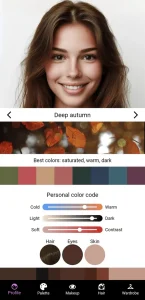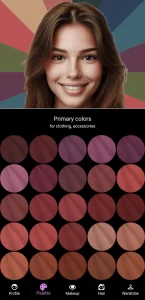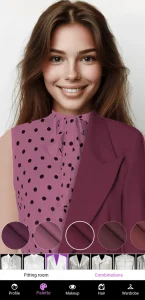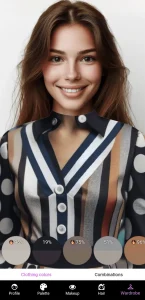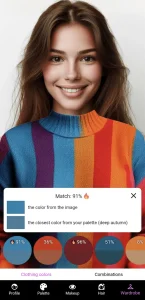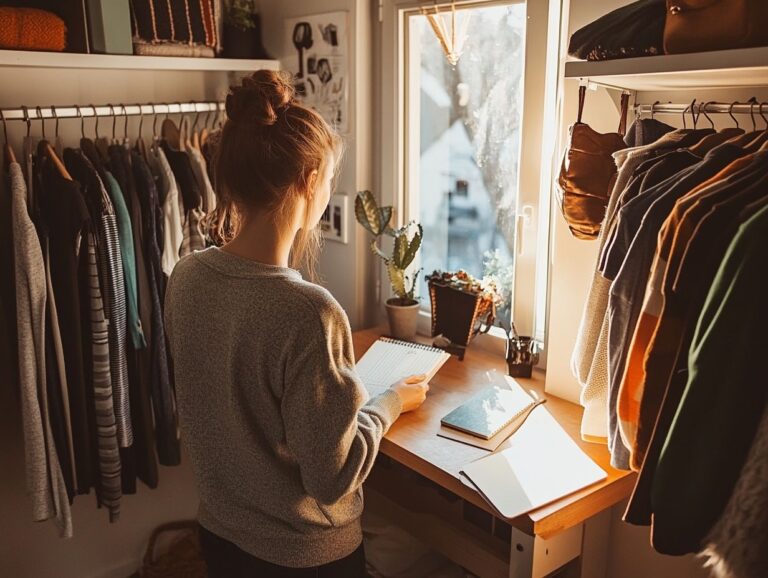Color psychology in fashion is a fascinating field that explores how colors influence our emotions, perceptions, and behaviors. When it comes to clothing, the colors we choose can affect not only how others perceive us but also how we feel about ourselves. Imagine stepping out in a bright red dress or a cool blue suit; each color emits a unique vibe and can alter mood significantly. This interplay between colors and emotions – an integral part of the psychology of color in clothing – unveils why certain colors become our favorites for interviews, dates, or feel-good days.
Each color carries its own psychological weight. Red, often associated with energy and passion, might elevate your confidence, making it a popular choice for moments when you need an assertiveness boost. Blues are hailed for their calming effects, potentially reducing stress levels and promoting a sense of serenity. This deep connection between the meaning of colors and our mental state offers a strategic palette from which we can craft our external image and internal feelings.
Understanding the psychology of color in clothing goes beyond superficial fashion choices; it’s about harnessing the power of hues to align how we are perceived with how we wish to feel. Whether we consciously realize it or not, each color choice narrates a part of our story. Thus, integrating knowledge about colors and emotions provides a powerful tool for personal expression and emotional influence through our wardrobe. As we navigate through daily interactions, the colors we wear weave a deeper dialogue between our inner feelings and the outside world, highlighting the profound role that color psychology plays in the tapestry of fashion.
Historical insights: evolution of color perception
The nuanced relationship between colors and emotions has evolved significantly over centuries, profoundly influencing fashion and personal expression. This evolution traces back to ancient civilizations where colors served not only aesthetic purposes but also symbolized social status and power dynamics. For example, in Ancient Egypt, blue, associated with royalty and divinity due to its rarity and the labor-intensive process to produce it, adorned pharaohs’ garments, emphasizing their divine stature.
Moving through history, the Renaissance marked a pivotal shift, where the meaning of colors became more widely accessible due to changes in pigment availability and the textile trade. This period shed light on the psychology of color in clothing, enabling a deeper public understanding and emotional connection to what was worn. The symbolic use of color intensified, with black becoming a powerful emblem of both authority and mourning in Europe.
In modern times, the infusion of cultural influences worldwide has further diversified the emotional impacts associated with colors. The fashion industry, tapping into these sentiments, has continuously adapted, using colors to provoke specific psychological responses. This strategic use of color allows for emotional expression in everyday wear, aligning with personal identity or societal trends.
Understanding the historical shifts in color perception enriches our appreciation of fashion’s power as a communication tool. It bridges past and present, offering insights into how our ancestors used color and how it continues to shape contemporary trends. By decoding the psychology of color in clothing, individuals can make more informed choices about their attire, enhancing personal expression through the deliberate use of colors and their associated emotions.
Key colors and their emotional impact
Diving into the realm of colors and emotions, each hue in your wardrobe holds the potential to evoke a spectrum of emotional responses and psychological effects. The psychology of color in clothing is not just about aesthetics but also about how these colors make us feel and the messages they communicate to others.
Red, often associated with power and passion, can increase your energy levels and is believed to enhance physical performance, making it a popular choice for sports attire. Meanwhile, blue, a universally favored color, is linked to feelings of calmness and serenity. It’s perfect for job interviews or situations where you want to project trust and confidence. Yellow, associated with happiness and creativity, can be an excellent choice to uplift your spirits and those around you.
Green, the color of nature, is easiest on the eyes and is known to create a peaceful and calming environment, which is why it’s often used in stores to put customers at ease. Black, versatile and a staple in the fashion industry, is associated with sophistication and authority but can also be a symbol of mourning in many cultures. White suggests simplicity, cleanliness, and purity, often used to evoke a sense of new beginning and clarity.
Understanding the meaning of colors and leveraging this knowledge can not only enhance your personal style but also influence your interactions and how others perceive you. Dressing with a specific color can be a strategic choice that goes beyond fashion, tapping into the emotional and psychological connections that colors inherently possess.
Incorporating color psychology into everyday wear
Incorporating the psychology of color in clothing, as Color Analysis – Dressika app, into your everyday wear involves more than just selecting a hue that looks good on you. It’s about understanding the broader implications of colors and emotions in your daily interactions and emotions. The meaning of colors plays a crucial role because each shade can evoke different responses. For instance, blue is often associated with stability and calmness, making it a perfect choice for business meetings or presentations where you want to convey trust and dependability.
On the other hand, red can stimulate feelings of passion and energy, which might be ideal for a social event or a date where you want to make a vibrant impression. Incorporating these principles in your daily wardrobe involves mindful decisions rather than random choices.
Consider the context of your day: Are you aiming to boost your confidence for a crucial job interview? Opt for darker, solid colors like navy blue or charcoal, which are often associated with professionalism. Or perhaps you’re looking to keep your spirits high on a dreary day? Brighter colors like yellow or orange can uplift your mood and that of those around you.
The strategy extends beyond individual items of clothing to how they are combined. Color blocking, for instance, can be used to create vibrant, eye-catching outfits that communicate creativity and confidence. Accessories also play a pivotal role: a green scarf might not just complement your outfit but could also be perceived as symbolizing balance and growth.
Understanding and applying the psychology of color in clothing allows for a curated approach to fashion that does more than meet the eye. It transforms everyday dressing into a nuanced form of personal expression and emotional connection, making every outfit an opportunity to resonate not just with style, but with purpose.
Future trends: the role of color in fashion innovation
The intersection of color and innovation in fashion illuminates a rapidly evolving landscape where the psychology of color is not just an artistic element but a pivotal component of fashion technology and future design strategies. As color dynamics continue to delve into our emotional and psychological realms, emerging technologies explore the multifaceted ways through which colors can enhance user engagement and drive fashion-forward trends.
The role of color in fashion innovation is increasingly recognized as essential in fostering sustainable practices, enhancing mood-based customer experiences, and promoting inclusivity through personalized fashion. Innovations like adaptive textiles that change color based on environmental stimuli or wearer’s emotional state are no longer the stuff of science fiction. These adaptive materials harness the relationship between colors and emotions to bring forth clothing that not only resonates with the wearer’s feelings but also interacts with it.
As the line between technology and fashion blurs, the meaning of colors is enriched, moving beyond aesthetics to embrace functionality. For instance, colors that adjust to light conditions for better visibility or garments that shift hues depending on the wearer’s health or mood indicate a significant leap towards interactive and empathetic clothing choices.
Moreover, knowing the psychology of color in clothing can strongly affect a consumer’s decision-making process, merging fashion with psychological comfort and emotional connectivity. Understanding color impact on mood and perception becomes a powerful tool for designers and brands to cultivate deeper connections with their audience, ensuring that colors are not merely seen but felt.
In this shifting paradigm where fashion meets function, color remains at the center, a testament to its enduring influence and its future potential in defining the trajectory of fashion innovation.
To further explore how specific colors can enhance your own fashion selections, consider using the Dressika AI Color Analysis app. This innovative tool offers a DIY color analysis online, identifying your personal color season and providing tailored suggestions for clothing, makeup, and even hair colors that best resonate with your natural tones. Ready to discover how personalized color insights can transform your style? Visit Color Analysis – Dressika app and embrace your natural beauty with a comprehensive color analysis that’s ready in less than a minute, ensuring you look best and feel confident in your personal colors.




